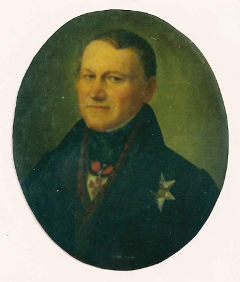Erik Laxmann (nonfiction): Difference between revisions
No edit summary |
No edit summary |
||
| Line 1: | Line 1: | ||
'''Erik Gustavovich Laxmann''' (Russian: Эрик (Кирилл) Густавович Лаксман) (July 27, 1737 – January 6, 1796) was a Finnish-Swedish clergyman, explorer and natural scientist born in Nyslott in Finland, then part of Sweden. He is remembered today for his taxonomic work on the fauna of Siberia and for his attempts to establish relations between Imperial Russia and Tokugawa Japan. | [[File:Erik_Laxmann.png|thumb|Erik Laxmann.]]'''Erik Gustavovich Laxmann''' (Russian: Эрик (Кирилл) Густавович Лаксман) (July 27, 1737 – January 6, 1796) was a Finnish-Swedish clergyman, explorer and natural scientist born in Nyslott in Finland, then part of Sweden. He is remembered today for his taxonomic work on the fauna of Siberia and for his attempts to establish relations between Imperial Russia and Tokugawa Japan. | ||
In 1757, Laxmann started his studies at the Academy of Åbo and was subsequently ordained a Lutheran priest in St. Petersburg, the capital of Russia. In 1764, he was appointed as a preacher in a small parish in Barnaul in central Siberia, whence he undertook a number of exploratory journeys, reaching Irkutsk, Baikal, Kiakhta and the border to China. His collection of material on the fauna of Siberia made him famous in scientific circles and in 1770, he was appointed professor of chemistry and economy at the Russian Academy of Sciences. In 1769, Laxmann was elected a foreign member of the Royal Swedish Academy of Sciences. | In 1757, Laxmann started his studies at the Academy of Åbo and was subsequently ordained a Lutheran priest in St. Petersburg, the capital of Russia. In 1764, he was appointed as a preacher in a small parish in Barnaul in central Siberia, whence he undertook a number of exploratory journeys, reaching Irkutsk, Baikal, Kiakhta and the border to China. His collection of material on the fauna of Siberia made him famous in scientific circles and in 1770, he was appointed professor of chemistry and economy at the Russian Academy of Sciences. In 1769, Laxmann was elected a foreign member of the Royal Swedish Academy of Sciences. | ||
Revision as of 07:42, 24 September 2019
Erik Gustavovich Laxmann (Russian: Эрик (Кирилл) Густавович Лаксман) (July 27, 1737 – January 6, 1796) was a Finnish-Swedish clergyman, explorer and natural scientist born in Nyslott in Finland, then part of Sweden. He is remembered today for his taxonomic work on the fauna of Siberia and for his attempts to establish relations between Imperial Russia and Tokugawa Japan.
In 1757, Laxmann started his studies at the Academy of Åbo and was subsequently ordained a Lutheran priest in St. Petersburg, the capital of Russia. In 1764, he was appointed as a preacher in a small parish in Barnaul in central Siberia, whence he undertook a number of exploratory journeys, reaching Irkutsk, Baikal, Kiakhta and the border to China. His collection of material on the fauna of Siberia made him famous in scientific circles and in 1770, he was appointed professor of chemistry and economy at the Russian Academy of Sciences. In 1769, Laxmann was elected a foreign member of the Royal Swedish Academy of Sciences.
- Adam Laxman (nonfiction) - son
- Erik Laxmann @ Wikipedia
